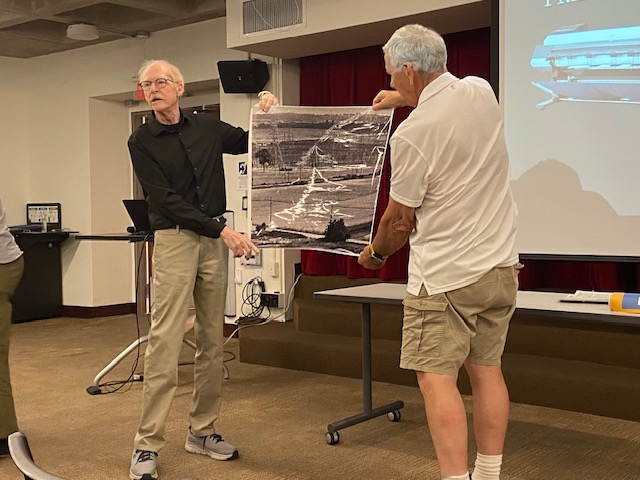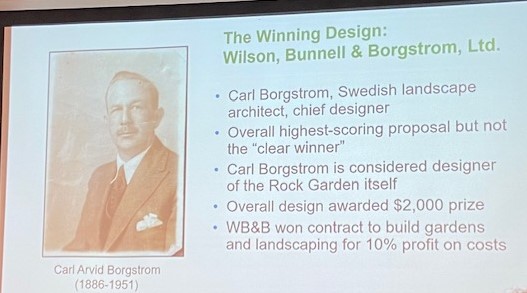By Emily R. Zarevich, Local Journalism Initiative Reporter
When a resident of Burlington enters the doors of the library’s Central branch, it is typically for the purpose of a deep dive into a book. However, on Friday, August 9, 2024, Burlington Public Library’s (BPL) Central branch, located at 2331 New Street, proffered an enjoyable and extended experience. BPL offered the opportunity for the people of Burlington to do a deep dive into their own city, in honour of this year’s Heritage Week, an annual city-wide examination of past and present happenings.
The four-hour fair was hosted in the library’s Centennial Hall from 12:00 p.m. to 4:00 p.m., on a day that started off rainy but gleamed with sunshine by the time the afternoon hours rolled in. The overall theme and objective of the event was the preservation of Burlington’s local history, an enterprise that is of concern to many, especially in an age of fast-paced urban and technological development. Parampreet Khanuja is the Burlington Public Library events coordinator and was the host of one of the booths available for visitation.
Marsha Paley, the chair of Heritage Week and the vice-chair of the Heritage Burlington Advisory Committee, provided insight on how the event was organized: “We actually had, as part of Heritage Week, a subcommittee with about forty organizations and individuals that participate,” Paley says. “The Burlington Public Library, the Burlington Historical Society…there’s a number of organizations that play a role. I’m the chair of the subcommittee.”
When asked to comment on any challenges the committee faced while putting together the event and the rest of Heritage Week, Paley responded, “Heritage is experiencing a reawakening in Burlington and there are a lot of interested parties that want to participate. A number of those organizations joined, especially because last year was our sesquicentennial, or 150th. So people want to join and contribute. And no, we haven’t had any issues. It’s been fabulous. All the events have come to fruition with a lot of participation.”
As well as Heritage Burlington and the Burlington Public Library themselves, Arts Burlington, Halton Region, Halton Regional Police Service, the Burlington Historical Society, Roseland Community Organization, and the City of Burlington all hosted booths where representatives from each organization interacted with visitors, exhibited unique resources and handed out free takeaway materials and promotional items. At the Roseland Community Organization, visitors could rifle through a selection of laminated photographs from Heritage Burlington, the provincial archives, the Hamilton Spectator, and local historian David Craig, provided from his collection. Heritage Burlington provided family-friendly activities for children in the form of colouring books and word searches. At the Halton Regional Police Service’s booth, visitors were allowed to touch the detached door of a real police car from the early history of policing in the region.

Arts Burlington, representing the six guilds with Art Gallery of Burlington studio space, featured some charming artworks by local visual artists, including Burlington Fine Arts Association member Beverly Allen, who also hosted the booth alongside her associate Andrea Perego, a member of the Burlington Sculptors and Carvers Guild and vice president of Arts Burlington. When asked what Arts Burlington is hoping to teach the people of Burlington during Heritage Week, Allen said, “I think a large part of it is, Burlington has a very rich cultural heritage that we’re continuing with guilds who are part of Arts Burlington. We’re here to let people know about the guilds, and about what we’re doing, and what they can learn and experience if they become members or come see us at the art gallery.”
From 1:30 p.m. to 3:00 p.m., visitors were treated to three riveting lectures presented by the Royal Botanical Gardens, City of Burlington Heritage Planning, and History Pix. The atmosphere was informal, allowing for many friendly exchanges. Visitors who had inquiries or concerns about the active progress of preserving Burlington’s history were given the opportunity at the end of each of the three demonstrations to propose questions of interest to the presenter.
The first talk, “Dreamers, Schemers, and Builders: An Introduction to the History of Royal Botanical Gardens,” was presented by Dr. David Galbraith, director of science at the Royal Botanical Gardens (RBG). The audience was led on a historic tour of the RBG’s fabrication and creation up to its current itinerary of educational programs, beatific walking opportunities, and nature excursions. Audience members were informed about the RBG’s creation story under the intrepid minds of creative innovators such as engineer Noulan Cauchon, RBG founder Thomas Baker McQuesten, designer Carl Borgstrom, and architect Matt Broman, whose collective efforts materialized one of Burlington’s greatest attractions. The presenter also cleared up any and all confusion as to where the “Royal” in the “Royal Botanical Gardens” comes from. As thoroughly explained by Galbraith, King George V, in a short letter dating from May 1930, granted permission for the gardens to include the word “Royal” in its name.

The second talk was titled “Supporting Burlington’s Heritage: Cultural Heritage Planning and Financial Incentive Programs.” It was presented by Chloe Richer, the senior planner at the City of Burlington’s Heritage Conservation Planning department. Visitors were furnished with enlightening information about the rules, regulations, and legalities behind Burlington’s heritage properties, which are scattered throughout the city and maintained as major indicators of Burlington’s established history. The presenter also made it a point to dispel the popular myth that a building with heritage property status loses its property value. As she explained in her PowerPoint slide points, the reality is actually quite the opposite. Studies, Richer explained, have proven that the value of a property actually increases when it is provided with the title of being a heritage property, both in terms of finances and prestige. Any visitors who carried doubts about whether or not to apply for heritage property status were reassured that it is a worthwhile undertaking.
The third talk, “History Outdoors,” was given by the aforementioned David Craig (not to be confused with the late Ottawa-based artist David Craig). Craig’s successful ongoing project is History Pix, an artistic-historical campaign to decorate the utility signal boxes of Burlington with old and rare photographs of the city from previous eras. Craig’s passion and enthusiasm for his work was evident. Visitors were guided through the process of collecting, restoring, and converting the photographs into large posters to be pasted on the grey boxes to beautify them and provide a free gallery experience to casual strollers. The adorned boxes can be found at locations such as Plains Road and Shadeland, where they exist as testaments to Burlington’s past as a thriving residential community. The history buffs in the audience were also particularly delighted by the presenter’s slideshow of similar projects: well-received outer building photography exhibits from around the world, some as far as Istanbul, Turkey. Outdoor displays of photographs have become a global phenomenon.
As previously expressed by Paley, heritage in Burlington is truly experiencing a lively comeback.




